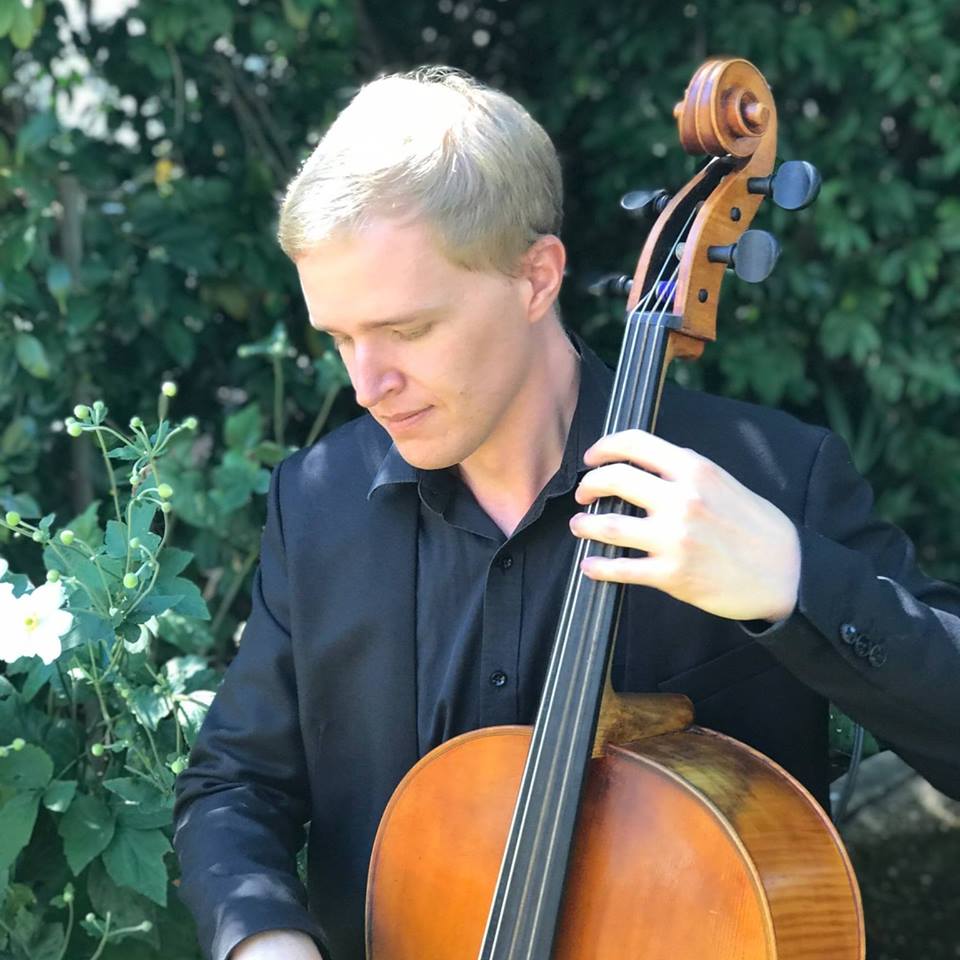Alexander Nicholls on Berlin’s Cellist King
An Interview for the Berlin Portrait Series on The Needle. By Joseph Pearson.

A year ago, the baroque cellist Alexander Nicholls had had enough of Berlin. He wanted to go back to New York, where he had been freshly minted from Juilliard’s historical performance program. But something changed in the months that followed. Perhaps after New York, one simply needs to adjust to Berlin’s rhythm, and start playing adagio. Or Winter turns into Spring. Or one gets established. Nicholls had changed his mind on Berlin.
Maybe we have the 18th-century to thank for that. Not just galleries of 18th-century art, where he goes to cheer himself up, or picnics in Potsdam, or the many 18th-century buildings that are tucked into Berlin’s motley cityscape (he’d like to see more rebuilding from that era), but a particular 18th-century cellist who would become a subject of fascination for Nicholls. But we’ll come to that.
Born in Canberra Australia, Nicholls is a sparkling, sharp, and gregarious person, who first came to the Germany capital because his teacher in New York had been a professor of cello here for two decades. As Nicholls told me, “I was looking for a new place to call home – one which was free from Trump and the Brexiters. Berlin has been my safe haven since”.
I often talk to artists who move to the city, and how stimulated they feel by it. Visual artists often complain that it was better here in the 90s and noughts, when studio space was cheaper and more available, and the scene more flexible and less moneyed. But classical musicians almost always tell me that Berlin is the place to be right now: full of venues that are packed, often youthful audiences, plenty of other musicians, three big opera houses, at least a half dozen world-class orchestras, and relatively affordable tickets. Classical music feels alive here in a way you find few other places.
Nicholls was given a warm welcome from the community of musicians here, he’s been since playing regularly in Berlin (with groups such as Barockorchester „Aris & Aulis“, Alten Musik Ensemble Titans Rising, and Freitagsakademie Berlin) and Europe (Les Arts Florissants, etc.). A standard question I ask for this portrait series is “where do you go for work”, and he replies, jollily, “Anywhere associated with Jesus. Seriously, that man has provided me with such an income with so many cantatas and passions. To this, I’d add the fun fact that J.S. Bach wrote a cantata for every Sunday for four years”.
Obviously, more than enough to keep Mr Nicholls in employment for some time.
“And when you are not working, where do you go to turn off?” I ask.
And he replies, “Anywhere there is cheap food and booze to be found. Basically, I just need to step out of the apartment”.
“And to think?”
He spends time in the Staatsbibliothek, or, failing that, he goes into the woods of the Tiergarten or those surrounding Berlin.
“And what are you doing in the archive?” I ask politely. Obviously, I want to ask what’s going on in the woods. But Nicholls seems like a such an upstanding young man.
Nicholls smiles and replies, “Berlin offers as much history that you can shake a Siegessäule at. I have always been fascinated with the musical history of Germany, and one of my musical patron heroes was once the ruling monarch of this very city. I have spent every spare second diving into both his personal music collection and the world he inhabited”.
I ask him to tell me more about that.
“How much time do you have?” he asks.
“Take as much as you like!”
And so this young baroque cellist tells me about Berlin’s Cellist King. I knew about Friedrich Wilhelm II’s sexual exploits, and dalliances on the Pfaueninsel (something I’ve written about for this blog), for which he was known as der Vielgeliebte. But his musical gifts… they were something I knew next to nothing about. (Nicholls plans to publish the monarch’s significant musical collection and record his music).
Alexander explains: “Upon moving to Berlin, I soon discovered/remembered to my delight that Friedrich Wilhelm II – a cellist – (whom I often come into contact with in my music as a dedicatee) was once the ruling monarch of this city and the rest of Prussia. In the music world, he is seen as an amateurish figure who perhaps played a bit of cello but was more into eating and fornicating (I mean, who isn’t). But as it turns out, he was into all three – and was just as proficient at cello as the other two”.
“I have spent a large portion of my spare time (when not running from rehearsal, to gig, to kebab stand) immersed in the Königliche Hausbibliothek. The music in this library was largely amassed by Friedrich the Great (or as I have been discovering – Friedrich the Egotistical, Autocratic, Vain, Maniacal Manic) and his nephew Friedrich Wilhelm II. After sifting through page upon page of music (in the catalogue there are some 4000 entries), I discovered Friedrich Wilhelm II’s personal cello music. To my surprise I found that the cellist king was actually an extremely gifted player; able to fly around the instrument as well as any professional-nowadays cellist might. He performed concertos by Carl Friedrich Abel, fiendishly difficult quartets and quintets by his court composer in absentia – the cellist Luigi Boccherini– various virtuosic sonatas by a myriad of composers who passed through the court, and even mucking in with his 70-strong orchestra to play symphonies and oratorios”.
“Through my continued private studies, performances and publications”, he continues, “I hope to revive the much-trampled reputation of this great artistic man. Sure, he had his faults (faults much contributed to by his uncle), but he is so much more than that. He alone brought to life with his patronage some of the finest works from that era: Wolfgang Amadeus Mozart’s three final quartets, Ludwig van Beethoven’s first cello sonatas, the two cello concertos and sonatas of Carl Friedrich Abel, Joseph Haydn’s op.50 quartets, countless other composers’ quartets, and not to mention the output of Boccherini between 1787-1795. Not a shabby legacy for der dicke lüderjahn!”
*
About The Berlin Portrait Series on The Needle
The Needle, one of Berlin’s most-read blogs, is beginning of a series of portraits of Berliners. The Berliners included, however, were not born here. They are all transplants: people who have come from somewhere else to make the German capital their home. We also interview people who have a meaningful connection to the city, but have since moved on. We aim for diversity: to claim the city for internationals (and those from diverse places and backgrounds in Germany) who make Berlin a better and more vibrant place to live.
If you would like to receive emails on future posts, please add your name below:
